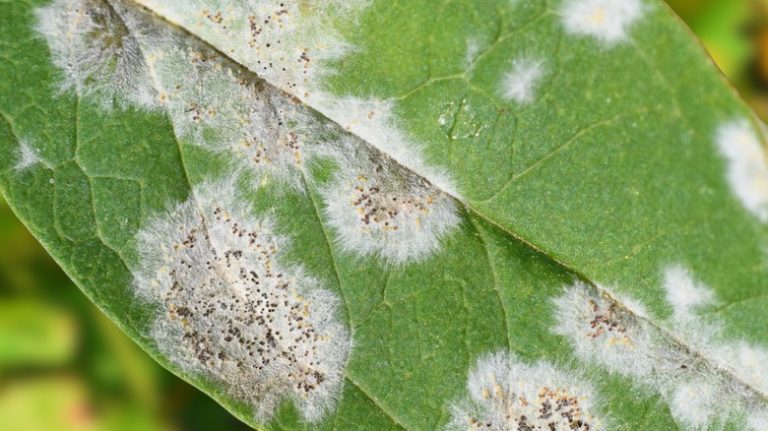Are you wondering why your Kousa dogwood is not thriving in your landscape? There are several common issues that can affect the health and appearance of this beautiful tree. Understanding these problems and their causes can help you address them and ensure the best growth and vitality for your Kousa dogwood.
The Kousa dogwood (Cornus kousa chinensis) is a native to the United States and is hardy in zones 5 through 8. It has attractive foliage and flowers, with its showy white flowers appearing in late spring. The flowers are actually small heads surrounded by four large white bracts that resemble petals. This tree is a favorite for many gardeners and homeowners, as it adds color and interest to the landscape.
One of the first problems you may encounter with your Kousa dogwood is poor growth or a decline in health. If your tree is not growing as expected or if the foliage is sparse and the flowers are few, it may be a signal that it is not getting the proper care. Kousa dogwoods prefer well-drained soil and full sun to partial shade. They are also resistant to diseases and pests, making them a low-maintenance choice for many gardeners.
Kousa Dogwood
Guide Tips
Your practices for caring for the Kousa Dogwood tree can make all the difference in its health and appearance. To guard against deer, it’s best to plant the tree in a location that is not easily accessible to them. Weeds should be kept at bay, as they can compete with the tree for nutrients and water. It’s important to ensure that the tree’s foliage is free from any signs of disease or insect infestation.
Within the growing season, the Kousa Dogwood will produce beautiful white or pink flowers, followed by abundant red fruit. These characteristics make it a desirable addition to any landscape. The Chinese Kousa Dogwood, or Cornus kousa chinensis, is especially noteworthy for its deep scarlet foliage in the fall. This cultivar, known as ‘Stellar Pink’, is a popular choice for its profuse blooms.
While the Kousa Dogwood is generally resistant to many diseases and insect attacks, it’s important to keep an eye out for any signs of trouble. If the tree’s growth seems stunted or the foliage appears diseased, it may be an indication of a problem. One common issue is a borer infestation. These larvae can bore deep into the tree’s trunk, causing damage to its roots. If you notice small holes or sawdust near the base of the tree, it’s best to consult an expert for advice on how to treat the problem.
When planting a Kousa Dogwood, it’s important to choose a site that provides the best growing conditions. The tree prefers well-drained soil that is rich in organic matter. It thrives in full sun to partial shade, but avoid planting it in areas with excessive shade. The Kousa Dogwood can tolerate a wide range of soil types, including clay and sandy soils. Regular watering is important, especially during dry periods.
To keep your Kousa Dogwood looking its best, it’s important to fertilize it regularly. Use a balanced fertilizer in early spring or late fall, following the package instructions. It’s important not to over-fertilize, as this can lead to excessive vegetative growth and poor flowering. Pruning should be done in late winter or early spring, while the tree is dormant. Remove any dead or diseased wood and shape the tree as desired.
With proper care and attention, your Kousa Dogwood can be a beautiful and healthy addition to your landscape.
Kousa Dogwood
The Kousa dogwood, a cultivar of the Chinese dogwood (Cornus kousa var. chinensis), is a noteworthy tree that can reach heights of 20-30 feet. Unlike its native counterpart, Kousa dogwoods also thrive in zones 5-8 and are a popular choice for landscaping due to their rich foliage and beautiful reddish-pink fruit heads.
One of the most desirable characteristics of Kousa dogwoods is their deep scarlet fall foliage. The leaves turn shades of red, pink, and purple, creating a vibrant and eye-catching spectacle in the landscape. These trees are also known for their strong and sunken trunks, which provide a solid base for their growth.
The Kousa dogwood is not without its problems. One common issue is anthracnose, a fungal disease that causes sunken lesions on leaves and stems. To prevent this disease, it is recommended to water the tree at the base and avoid overhead watering. Mulching around the base of the tree can also help retain moisture and prevent the spread of fungal spores.
Another problem that Kousa dogwoods may face is deer damage. Deer are known to feed on the foliage and may cause damage to the tree if not properly protected. It’s recommended to install fences or use deer-resistant sprays to keep these pests at bay.
To care for Kousa dogwoods, it is important to prune them in late winter or early spring. Pruning helps shape the tree and promotes better air circulation, reducing the risk of diseases. Fertilizing in the early spring with a slow-release fertilizer can also help maintain the tree’s health and promote optimal growth.
In a full-sun to light-shade landscape, Kousa dogwoods offer a soft and elegant presence that can enhance any garden. With proper care and attention, these trees can thrive and provide years of abundant growth and beauty.
Kousa Dogwood Care
Kousa dogwoods, also known as Chinese dogwoods, are small to medium-sized trees that are native to Eastern Asia. They are highly valued for their attractive flowers, unique bark, and ornamental fruit. However, like any other type of tree, Kousa dogwoods require proper care to thrive in your landscape.
Planting:
- Select a planting location in a sunny or partially shaded area in well-drained soil.
- Prepare the planting hole twice as wide and as deep as the root ball.
- Place the tree in the hole, ensuring that the base of the trunk is level with the ground.
- Backfill the hole with soil, firming it gently around the roots.
- Water the tree thoroughly after planting.
Mulching and Watering:
- Apply a layer of mulch around the base of the tree to retain moisture and suppress weeds.
- Water the tree regularly during the first few years to establish a strong root system.
Pruning:
- Prune the tree in early spring before new growth begins.
- Remove any dead or damaged branches.
- Thin out the canopy to improve air circulation and light penetration.
Fertilizing:
- Fertilize the tree in early spring with a slow-release fertilizer formulated for trees and shrubs.
- Follow the instructions on the fertilizer packaging for the correct application rate.
Pest and Disease Control:
- Kousa dogwoods are relatively pest and disease resistant but may occasionally be affected by leaf spot or powdery mildew.
- Monitor the tree regularly for any signs of pests or diseases.
- If necessary, consult an expert or use appropriate insecticides or fungicides.
Noteworthy Characteristics:
- Kousa dogwoods have a rounded growth habit and can reach a height of 15-25 feet.
- They produce clusters of creamy-white flowers in late spring, followed by scarlet fruit in the fall.
- Their bark develops a unique pattern resembling puzzle pieces as they age.
- Chinese dogwoods are hardy in USDA planting zones 5-8.
- They are well-suited for use in landscapes as specimen trees or as part of a mixed border.
Tips:
- Ensure the tree is properly watered during dry periods, especially in the first few years after planting.
- Regularly inspect the tree for signs of pests or diseases and take prompt action if necessary.
- Remove any weeds or grass that may compete with the tree for nutrients and water.
- Consider planting Kousa dogwoods in groups or clusters for a more dramatic effect.
By following these care practices, you can ensure the health and beauty of your Kousa dogwoods for many years to come.
Kousa Dogwood in the Landscape
Kousa dogwood (Cornus kousa), also known as Chinese dogwood, is a beautiful and versatile plant that can be a great addition to your landscape. This deciduous tree is native to China, Japan, and Korea, and it is widely planted in the United States. The Kousa dogwood is known for its showy flowers that bloom in late spring or early summer, followed by fruit that resembles raspberries.
The flowers of the Kousa dogwood are small and pink, and they can be quite profuse, covering the tree in shades of pink. The fruit, which ripens in late summer, is a creamy-white color and is loved by birds. The Kousa dogwood is also prized for its attractive foliage, which turns shades of red, orange, and brown in the fall.
One of the best things about Kousa dogwood is that it is more resistant to disease than other dogwood varieties, like the native American dogwood (Cornus florida). While American dogwoods are often plagued by anthracnose, a fungal disease that can cause leaf spots and dieback, Kousa dogwoods are less susceptible to this disease. However, they can still be attacked by other fungal diseases like powdery mildew.
If you are considering planting a Kousa dogwood in your landscape, there are a few tips to keep in mind. First, choose a location that receives full to partial sun. Kousa dogwoods prefer well-drained soil, so make sure the area is not prone to standing water. It is also important to water them regularly, especially during dry spells.
When it comes to pruning, Kousa dogwoods should be pruned in late winter or early spring, before new growth begins. Remove any dead or diseased branches, as well as any branches that are crossing or rubbing against each other. This will help the tree maintain a healthy and attractive shape.
In conclusion, the Kousa dogwood is a beautiful and resilient tree that can add color and interest to your landscape. Its flowers, foliage, and fruit make it a desirable addition to any garden. With proper care and maintenance, you can enjoy the beauty of the Kousa dogwood for many years to come.
| Kousa Dogwood in the Landscape: | |
|---|---|
| Plant | Kousa dogwood (Cornus kousa), also known as Chinese dogwood, is a beautiful and versatile plant that can be a great addition to your landscape. |
| Fruit | The fruit, which ripens in late summer, is a creamy-white color and is loved by birds. |
| Flowers | The flowers of the Kousa dogwood are small and pink, and they can be quite profuse, covering the tree in shades of pink. |
| Landscape | The Kousa dogwood is a beautiful and resilient tree that can add color and interest to your landscape. |
| Diseased | While American dogwoods are often plagued by anthracnose, a fungal disease that can cause leaf spots and dieback, Kousa dogwoods are less susceptible to this disease. |
| Pruning | Kousa dogwoods should be pruned in late winter or early spring, before new growth begins. Remove any dead or diseased branches, as well as any branches that are crossing or rubbing against each other. |
| Foliage | Kousa dogwoods are prized for their attractive foliage, which turns shades of red, orange, and brown in the fall. |
| Desired | The Kousa dogwood is a desirable addition to any garden, thanks to its flowers, foliage, and fruit. |


